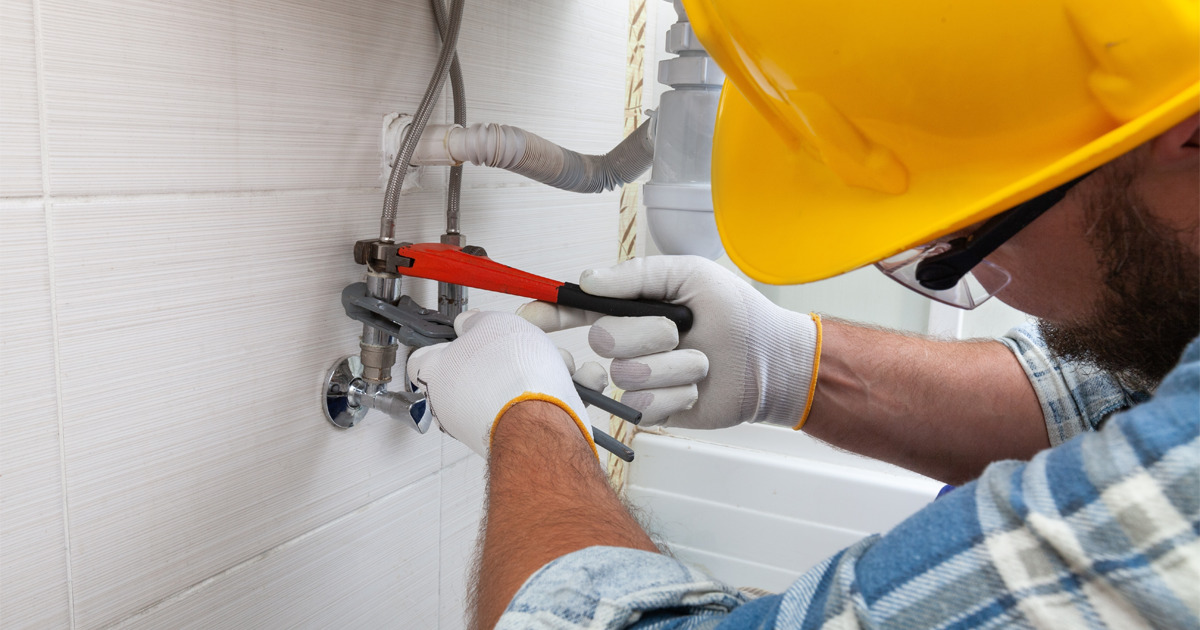They are making several good observations relating to How Does the Plumbing Work in Your Home? in general in this great article down the page.

Plumbing is a vital aspect of any kind of home, in charge of supplying clean water for drinking, cooking, and showering, as well as eliminating wastewater securely. Comprehending the essentials of home plumbing is vital for every single property owner to make certain proper maintenance, troubleshooting, and, if essential, repairs. In this novice's overview, we'll cover the fundamental concepts of home plumbing to assist you end up being more familiar with just how it works.
Water Heating Unit
The water furnace is responsible for heating water for residential use, including bathing, food preparation, and cleansing. Usual kinds of hot water heater consist of tank-type hot water heater, tankless (on-demand) hot water heater, and heat pump hot water heater. The hot water heater is connected to the water supply system and delivers hot water to plumbing fixtures as required.
Drainage System
The water drainage system gets rid of wastewater from your home and carries it away to a sewage treatment facility or septic system. It contains a network of pipelines, installations, and components that transport wastewater from plumbing components to the primary sewer line or septic tank. Correct drain is important to stop blockages, back-ups, and sewage leaks.
Ventilation System
The ventilation system helps maintain correct atmospheric pressure and protect against drain gases from entering your home. Vent pipes, also called air vent stacks, extend from plumbing fixtures to the roofing, enabling sewer gases to leave securely outdoors. Ventilation pipes also permit air to go into the water drainage system, assisting in smooth wastewater circulation and protecting against suction or vacuum cleaner results.
Water Supply System
The water supply system brings tidy water right into your home from a local water source or a private well. It includes a primary water line that connects to your home's plumbing system, generally located underground. A water meter determines the quantity of water taken in, while a shut-off valve permits you to manage the circulation of water into your home.
Plumbing Components
Plumbing fixtures are devices that provide water to various parts of your home and consist of sinks, taps, bathrooms, showers, bath tubs, and home appliances such as dishwashers and washing makers. Each component is linked to the water system through pipelines and fittings and might have its shut-off valve for upkeep or emergency situations.
Typical Plumbing Devices
Having the right tools available is vital for executing fundamental plumbing repairs and upkeep tasks. Usual plumbing tools consist of flexible wrenches, pipe wrenches, pliers, pipeline cutters, hacksaws, bettors, augers (or drain serpents), and Teflon tape. Having these tools readily offered can help you take on minor plumbing concerns effectively.
Basic Plumbing Fixings
While some plumbing repair work may call for specialist help, several common problems can be resolved with fundamental do it yourself strategies. Understanding just how to deal with a leaky faucet, unblock a drainpipe, replace a toilet flapper, or repair a trickling showerhead can conserve you time and money on plumbing repair work.
Verdict
Understanding the fundamentals of home plumbing is essential for each homeowner to maintain a safe, practical, and efficient plumbing system. By acquainting on your own with the water supply system, plumbing components, water drainage system, air flow system, common plumbing tools, and basic repair work, you can confidently attend to minor plumbing problems and guarantee your home's plumbing system operates efficiently.
Understanding Basics of Home Plumbing System: A Beginner's Guide
The Main Components of Your Home Plumbing System
The Water Supply System
This system is responsible for transporting fresh water into your home. It usually has a main water line that splits into two branches: one directed towards cold water services and the other connected to a water heater for hot water. The pressure is key here; it ensures water reaches all parts of your house.
The Drainage System
Once water has been used, it becomes wastewater that needs to be removed from your home. This is where the drainage system comes into play. It includes all the pipes that carry wastewater and sewage away from your house to sewage treatment facilities or septic tanks.
The Vent System
The vent system prevents sewer gases from entering your home and helps maintain the pressure balance that allows wastewater to flow out properly. These vents usually exit through the roof of your house.
Water Heating System
For those who enjoy hot showers or using hot water for cleaning, the water heater is a crucial part of the plumbing system. It can be a tankless system, which heats water on demand, or a traditional water tank model.
Common Plumbing Problems and Basic Troubleshooting
Plumbing systems, while designed to be durable, can face issues like clogged drains, leaky faucets, or low water pressure. Here are some basic troubleshooting tips:
Clogged Drains
Use a plunger or a plumber's snake to try and dislodge whatever is blocking the drain. Regular cleaning can prevent clogs.
Leaky Faucets
Often caused by worn-out washers or gaskets, these can usually be replaced by someone with basic DIY skills.
Low Water Pressure
This might be due to sediment build-up in your fixtures or a leak somewhere in your water line. Cleaning out aerators or seeking a professional to detect leaks might be necessary.
Preventive Maintenance Tips
Maintaining your plumbing system is key to avoiding emergencies. Regularly check for leaks, avoid disposing of grease down the sink, and have your system inspected by a professional plumber at least once a year.

We were shown that report about What to Know About Plumbing: Basics, Tips, and Insights through a pal on another web address. Please set aside a second to distribute this page if you appreciated it. Thanks a lot for your time. Come back soon.
Request Free Estimate